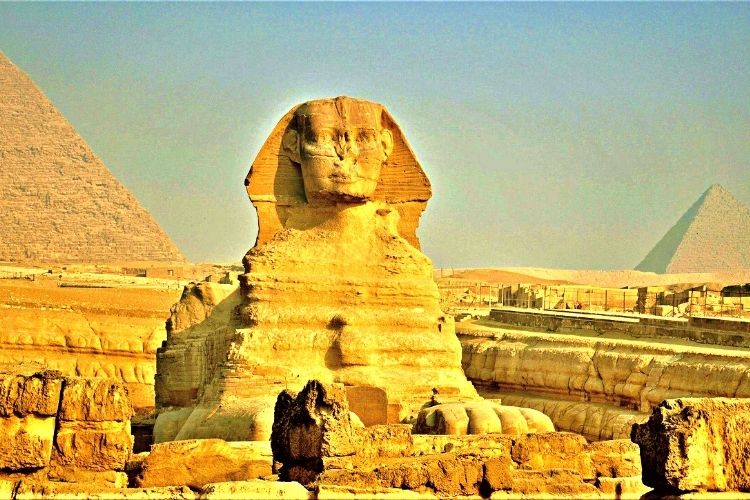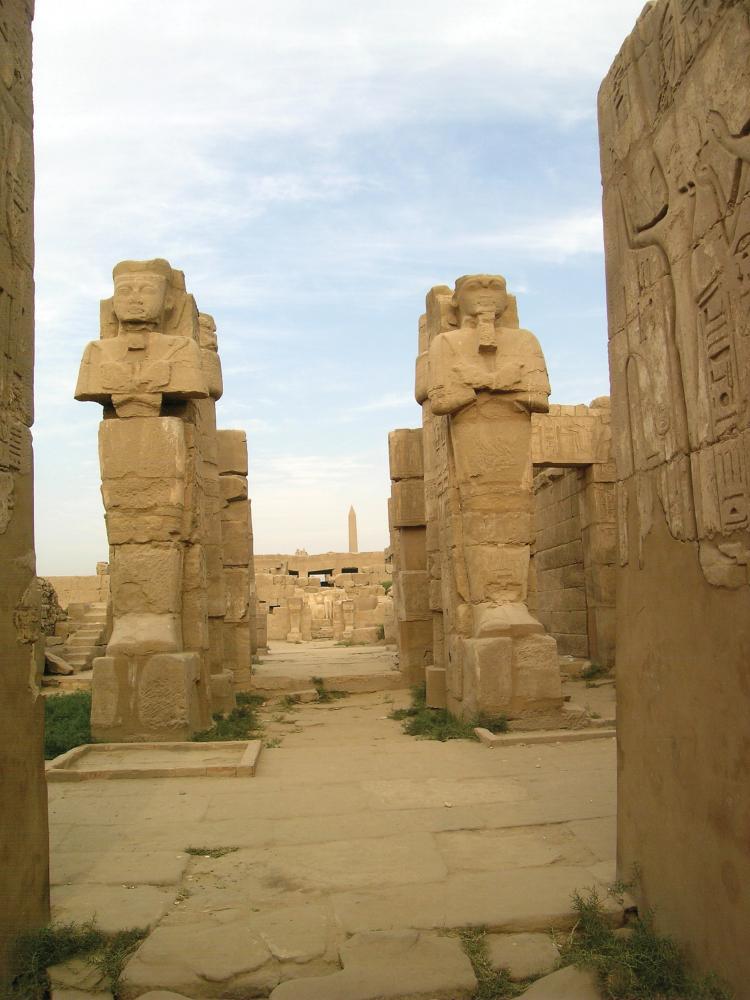Unveiling the Ancient Wonders: Explore Egypt\'s Iconic Pyramids and Temples

I. Introduction
Unveiling the Mysteries of Ancient Egypt
Egypt, a land steeped in history and mystique, is home to some of the most iconic ancient wonders in the world. From the majestic pyramids to the grand temples, exploring Egypt’s archaeological treasures is like stepping back in time. Each structure tells a story of a civilization that thrived thousands of years ago, leaving behind a lasting legacy that continues to captivate modern-day travelers. In this blog, we will delve into the wonders of ancient Egypt, specifically focusing on the awe-inspiring pyramids and temples that have stood the test of time.
Why Egypt’s Pyramids and Temples Are Worth Exploring
Egypt’s pyramids and temples are not just architectural marvels; they hold immense historical, cultural, and spiritual significance. Here are some reasons why they are worth exploring:
- Fascinating Ancient Engineering: The construction techniques and precision involved in building the pyramids and temples are awe-inspiring. These massive structures were built with extraordinary precision, using innovative engineering methods that baffle experts to this day.
- Insight into Ancient Egyptian Civilization: Exploring the pyramids and temples offers a unique opportunity to gain insight into the ancient Egyptian civilization. From the intricate hieroglyphics adorning the temple walls to the elaborate burial rituals captured within the pyramids, each structure provides a glimpse into the culture, beliefs, and daily lives of the ancient Egyptians.
- Majestic Pyramids: The pyramids of Giza, including the Great Pyramid of Khufu, are some of the most recognizable landmarks in the world. These colossal structures, built as tombs for the pharaohs, are a testament to the immense power and wealth of ancient Egypt.
- Sacred Temples: Egypt is dotted with numerous temples dedicated to various gods and goddesses. Each temple has its own unique architectural style and religious significance, making them fascinating to explore. The temples of Luxor, Karnak, Abu Simbel, and Philae are among the most renowned.
- Spiritual and Energetic Experiences: Many visitors to the pyramids and temples describe a profound sense of awe and reverence, feeling the energy and spiritual presence of the ancient Egyptians. Some even believe that these sites have mystical and healing properties.
By exploring Egypt’s pyramids and temples, you are embarking on a journey to unravel the mysteries of an ancient civilization, one that has left an indelible mark on human history. So, pack your bags and get ready to immerse yourself in the wonders of ancient Egypt.

II. The Great Pyramid of Giza
History and Significance of the Great Pyramid of Giza
Facts about the Construction and Structure of the Pyramid
The Great Pyramid of Giza is undoubtedly one of the most iconic ancient wonders of the world. It stands as a testament to the ingenuity and architectural prowess of the ancient Egyptians. This incredible structure holds a rich history and continues to captivate visitors from across the globe.
History and Significance of the Great Pyramid of Giza
The Great Pyramid of Giza was built as a tomb for Pharaoh Khufu during the Old Kingdom period of ancient Egypt, around 2560 BC. It was the tallest man-made structure in the world for over 3,800 years until the completion of the Lincoln Cathedral in England. The pyramid, along with the surrounding pyramids and the Sphinx, forms the Giza Necropolis, a UNESCO World Heritage Site.
The significance of the pyramid goes beyond its immense size. It holds a deep cultural and symbolic meaning for the ancient Egyptians. It represents the pharaoh’s eternal journey to the afterlife and his divine connection with the gods. The precision and complexity of its construction showcase the advanced engineering techniques of the time.
Facts about the Construction and Structure of the Pyramid
The Great Pyramid of Giza is made up of over 2 million limestone blocks, each weighing an average of 2.5 tons. The construction process involved the precise alignment of these massive stones to create the pyramid’s distinctive shape. The pyramid stands at an impressive height of 481 feet (146.5 meters) and covers an area of around 13 acres (5.3 hectares).
Some fascinating facts about the construction and structure of the Great Pyramid include:
- The pyramid was originally covered in a polished limestone casing, which gave it a smooth and shining appearance.
- It is estimated that the pyramid took about 20 years to build, with a workforce of around 20,000 to 30,000 laborers.
- The interior of the pyramid consists of a series of chambers and passageways, including the King’s Chamber and the Queen’s Chamber.
- The pyramid was originally capped with a gold-plated capstone, known as the pyramidion, which has since been lost.
To learn more about the fascinating history and construction of the Great Pyramid of Giza, you can visit its Wikipedia page.

III. The Temple of Karnak
Located in the city of Luxor, the Temple of Karnak is one of the most impressive and well-preserved ancient Egyptian temples. It is a vast religious complex that was dedicated to the god Amun. Here is an overview of the temple and its significance.
Overview of the Temple of Karnak
The Temple of Karnak is the largest religious structure ever built in the world, covering an area of 200 acres. Its construction began around the 16th century BC and continued for over 2,000 years, with multiple pharaohs adding their own contributions to the temple complex. The temple was a center of worship and pilgrimage for ancient Egyptians and is now a popular tourist attraction.
Inside the temple complex, you will find a series of structures and pylons, including the Great Hypostyle Hall, which is one of the most iconic features of the temple. This hall contains 134 massive columns, some of which are over 70 feet tall and adorned with intricate carvings and hieroglyphics. The temple complex also includes smaller temples and chapels dedicated to various gods and goddesses.
Exploring the Intricate Architecture and Symbolism
The Temple of Karnak is renowned for its impressive architecture and intricate carvings. The temple’s design and decorations reflect the religious beliefs and rituals of the ancient Egyptians. Some of the key features and symbolism found in the temple include:
1. Hypostyle Hall: The Great Hypostyle Hall is a masterpiece of ancient Egyptian architecture. Its towering columns symbolize the connection between the earthly and divine realms.
2. Obelisks: The temple complex is home to several obelisks, which were intended to act as eternal rays of the sun god Ra. These tall, slender structures are covered in hieroglyphics and were seen as symbols of power and worship.
3. Sacred Lake: The temple complex also features a sacred lake, known as the Sacred Lake of Karnak. This artificial lake played a significant role in purification rituals and was associated with the creation of the world.
Visiting the Temple of Karnak allows you to step back in time and witness the grandeur and symbolism of ancient Egyptian civilization. It is a must-visit destination for history enthusiasts and anyone interested in experiencing the wonders of the ancient world.

IV. Abu Simbel Temples
Abu Simbel Temples: A Marvel of Ancient Engineering
Located in southern Egypt, the Abu Simbel Temples are a must-visit destination for those interested in ancient history and architectural wonders. Built during the reign of Pharaoh Ramesses II in the 13th century BC, these temples represent some of the most impressive examples of ancient Egyptian engineering and craftsmanship.
The complex consists of two main temples:
1. The Great Temple of Abu Simbel: This grand temple is dedicated to the gods Amun, Ra-Horakhty, and Ptah. It features four colossal statues of Ramesses II seated on his throne, each measuring over 20 meters in height. The temple’s interior is adorned with intricate wall carvings and hieroglyphics depicting various military scenes, religious ceremonies, and the life of Ramesses II.
2. The Temple of Hathor: Located adjacent to the Great Temple, the Temple of Hathor is dedicated to the goddess Hathor, the wife of Ramesses II. It is smaller in scale but equally impressive in its design and decoration. The facade of the temple is adorned with six standing statues of Ramesses II and two of his beloved wife, Queen Nefertari.
Insights into the Temples’ Cultural and Historical Significance
The Abu Simbel Temples hold immense cultural and historical significance, as they were not only built to showcase the power and grandeur of Ramesses II but also to commemorate his victory at the Battle of Kadesh. These temples served as religious sanctuaries and were believed to be the earthly abode of the gods Amun and Hathor.
In addition to their religious significance, the Abu Simbel Temples also played a crucial role in modern history. In the 1960s, when the construction of the Aswan High Dam threatened to submerge the temples underwater, an international campaign was launched to save them. The entire complex was relocated to higher ground, an impressive feat of engineering and preservation.
Today, visitors can explore the Abu Simbel Temples and marvel at the intricate carvings, colossal statues, and stunning architectural design that have stood the test of time. Their significance as a UNESCO World Heritage Site and their contribution to our understanding of ancient Egypt make them a must-see attraction for any traveler interested in ancient civilizations.

V. Luxor Temple
Discovering the Splendor of Luxor Temple
One of the most captivating ancient wonders of Egypt, Luxor Temple is a must-visit destination for history enthusiasts and culture seekers. Located in the city of Luxor on the eastern bank of the Nile River, this magnificent temple offers a glimpse into the rich history and grandeur of ancient Egypt.
As you step foot into Luxor Temple, you’ll be transported back in time to the era of the pharaohs. The temple was built during the New Kingdom period, around 1400 BCE, and it served as a religious center dedicated to the rejuvenation of kingship and the worship of the gods.
Highlights of the Temple’s Architecture and Religious Practices
The architecture of Luxor Temple is a true testament to the ingenuity and craftsmanship of the ancient Egyptians. Here are some key highlights of the temple’s design and religious practices:
1. The Great Court: The entrance to Luxor Temple is marked by a massive pylon (a towering gateway) that leads to the Great Court. This open-air courtyard was once used for religious ceremonies and processions.
2. The Colonnade: One of the most iconic features of Luxor Temple is its impressive colonnade. It consists of rows of massive columns with intricate carvings and hieroglyphics, depicting various scenes from ancient Egyptian mythology and history.
3. The Birth Chapel: Within the temple complex, you’ll find the Birth Chapel, which was dedicated to the divine birth of Amenhotep III, one of the pharaohs of the New Kingdom. The walls of the chapel are adorned with beautiful reliefs and depictions of the pharaoh’s birth scene.
4. The Hypostyle Hall: The Hypostyle Hall is another remarkable feature of Luxor Temple. This vast hall contains 32 columns, each with its unique decoration and symbolizing the union of Upper and Lower Egypt.
Whether you’re interested in ancient history, architecture, or religious practices, Luxor Temple offers a captivating journey through Egypt’s glorious past. Don’t miss the opportunity to explore this majestic site and immerse yourself in the wonders of ancient Egypt.
